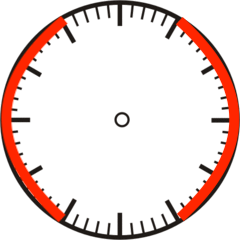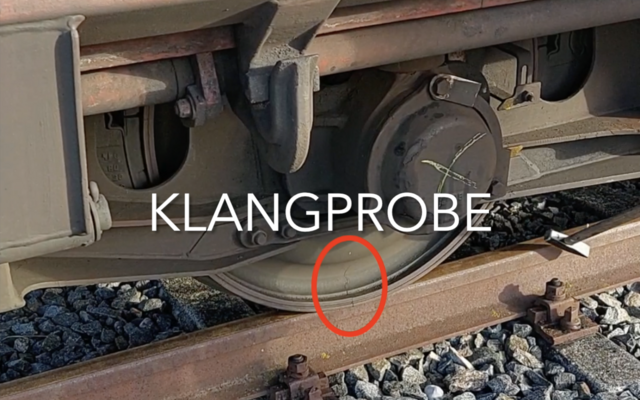The following video of the sound test visualises the procedure and the test result.
It is intended as a support for use in the daily practice of technical vehicle inspection.
The following video of the sound test visualises the procedure and the test result.
It is intended as a support for use in the daily practice of technical vehicle inspection.
The following points should be observed when performing the sound test:
When performing the sound test, the brake must be released and the brake pads must not be in contact with the wheel rim.
A hammer (with a steel hammer head, handle length not specified) is used to strike the front surface of the wheel rim or the wheel tread between 7 and 11 o'clock or 1 and 5 o'clock (relative to the full wheel circumference). For ergonomic reasons, a long handle is recommended.
The hammering must be carried out in such a way that no damage is caused to the wheelset.
An undamaged wheel without a cracked wheel rim sounds bright during a sound test.
A wheel with a cracked wheel rim will produce a dull sound.
If a wheel sounds dull, it is necessary to carefully inspect the entire wheel (especially the tread and wheel rim) for cracks.
Damaged wheelsets must be removed and replaced.

